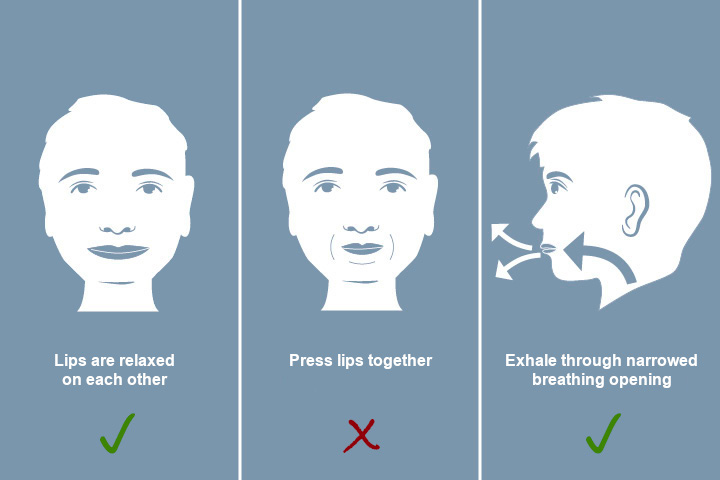Pursed lips breathing is an exhalation technique for people with breathing problems. It involves loosely closing your mouth and allowing the air to flow out quietly. Breath out with pursed lips in your own personal rhythm. The pursed lips technique is one of the breathing techniques known as endogenous stenosis respiration.
To breathe out, close your mouth in a relaxed position, leaving a small gap between your lips.
Breathe out through this gap. The air escapes slowly and for longer through the lips.
Remember not to press your lips together. There should ideally be no tension between your lips and cheeks. Remember to relax as you breathe out.


You can use other obstacles to achieve the same effect as with pursed lips breathing, such as our PEP system, the PARI PEP S System that can be individually adjusted to each patient.
Pursed lips breathing is a tried and trusted breathing technique that people with chronic respiratory disease (including asthma, bronchiectasis, COPD, cystic fibrosis and primary ciliary dyskinesia) and acute infections use, although it is also used by healthy people after physical exertion. It helps to:
This article was written in cooperation with the experienced physiotherapist and respiratory therapist Rita Kieselmann, who has been working in this field since 1974. Her focus is on the treatment of children and adults with chronic respiratory diseases.
Rita Kieselmann is the founder of the Physiotherapy working group in the Mukoviszidose e. V. (Cystic Fibrosis Association in Germany). She has also developed self-help techniques for clearing mucus such as modified autogenic drainage and others.
Note: The information in this blog post is not a treatment recommendation. The needs of patients vary greatly from person to person. The treatment approaches presented should be viewed only as examples. PARI recommends that patients always consult with their physician or physiotherapist first.
An article written by the PARI BLOG editorial team.
© 2025 PARI GmbH Spezialisten für effektive Inhalation